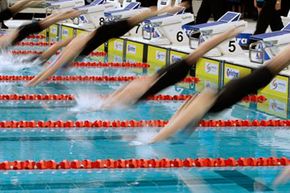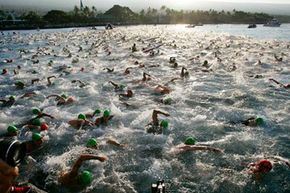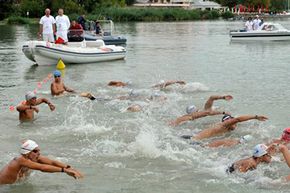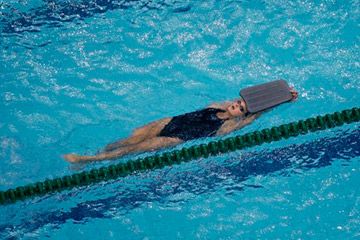In competitive swimming, one of the most essential elements of getting a good time is diving technique. Swimmers are taught to stand on the blocks or at the edge of the pool, bend their knees, push off, and enter the water at an angle with their hands forward. A bad dive -- hitting the water on your belly or diving too deep -- can cost you valuable seconds and even make you lose a race.
That type of dive works fine if you're competing in a swimming pool, but what should you do if you're running in a triathlon? That often requires running on a beach and entering the shallow water of a river, lake or ocean, then swimming a long distance. Even here, entering the water properly can make or break your race. So how do you enter such shallow water quickly?
Advertisement
One way to make this happen is to do a dolphin dive. Dolphin diving, also known as dolphining, is a technique used by triathletes to make fast entry into the water and to start swimming right away. Master the dolphin dive and you can have a five to 10-second improvement over your total time in the water [source: Dobkanzie].
The technique is called dolphin diving because it involves diving into the water, gliding a bit under the waves, then launching yourself out of the water and into the air, similar to how dolphins jump up and out of the water [source: Kent].
In this article, we'll describe the proper dolphin diving techniques and how they can benefit triathletes and other competitive swimmers.
Advertisement




